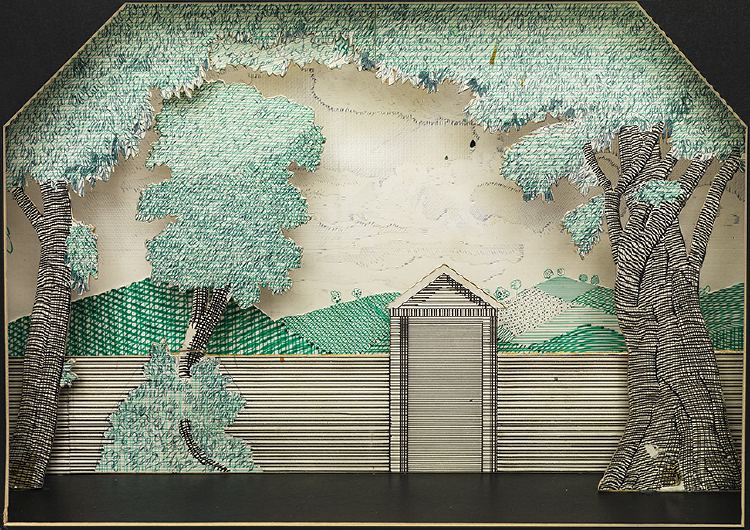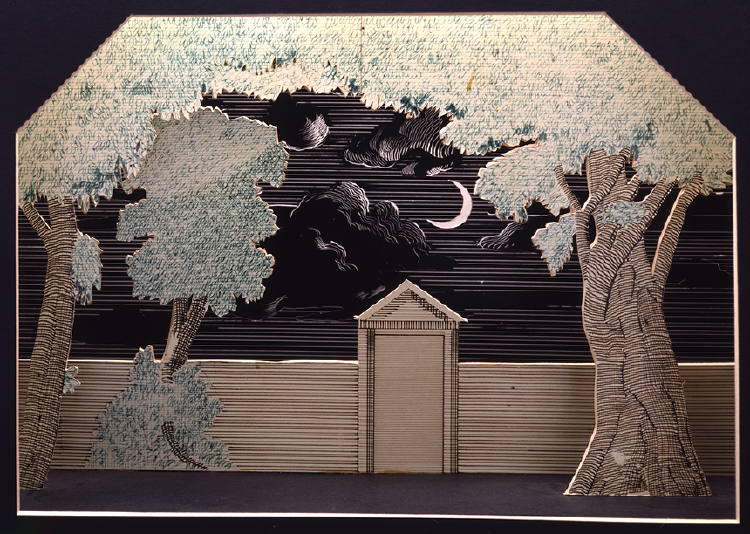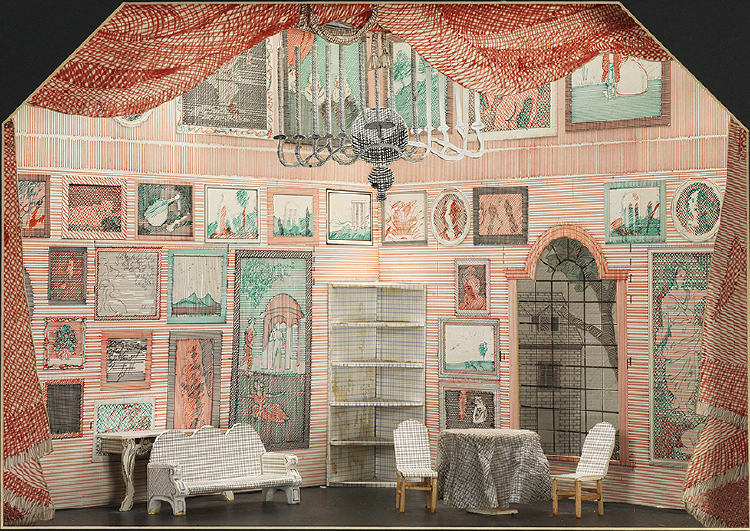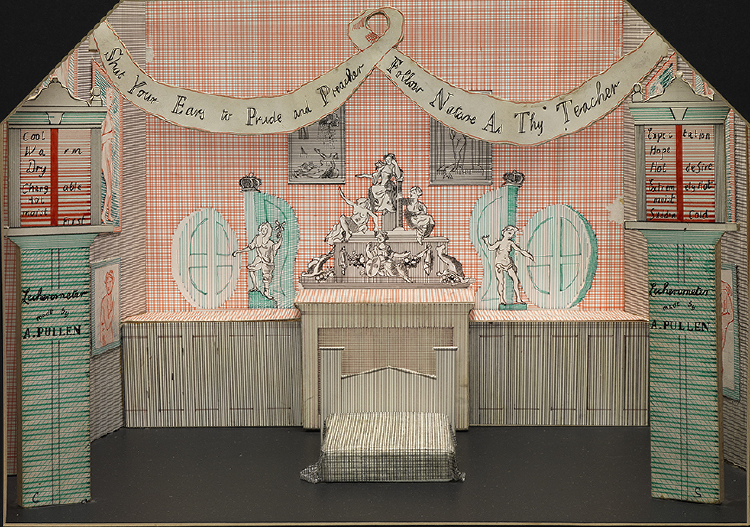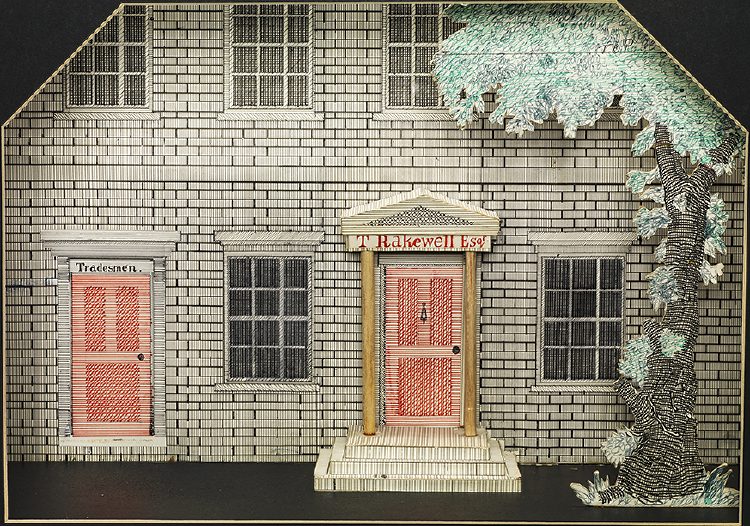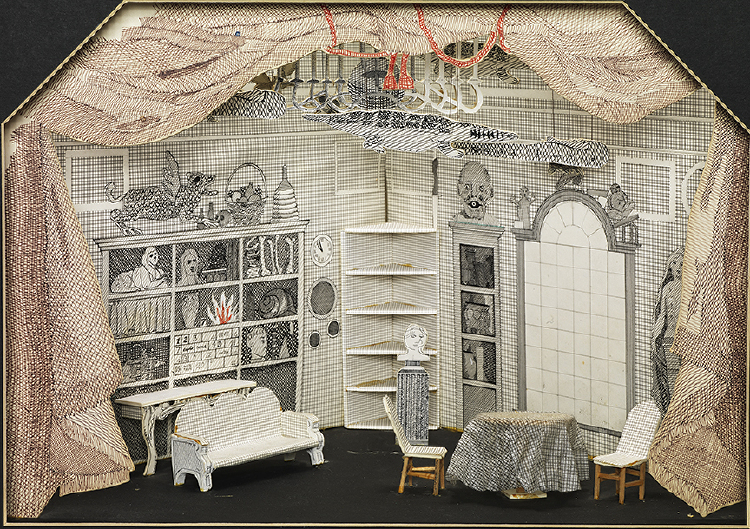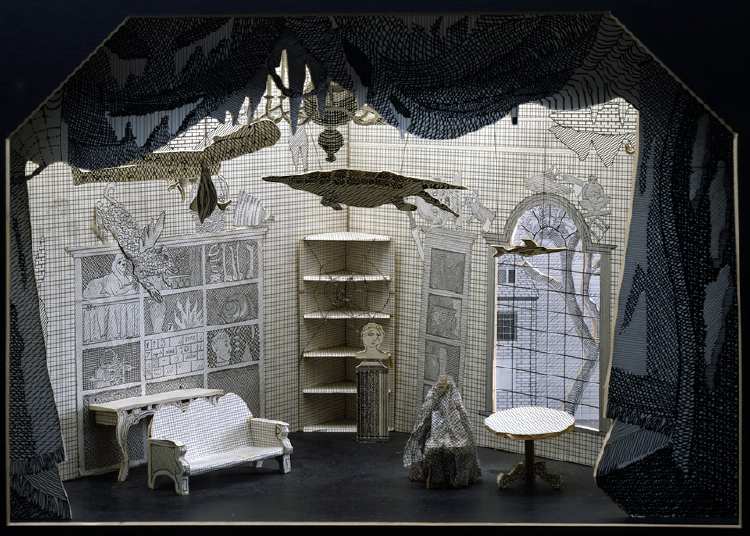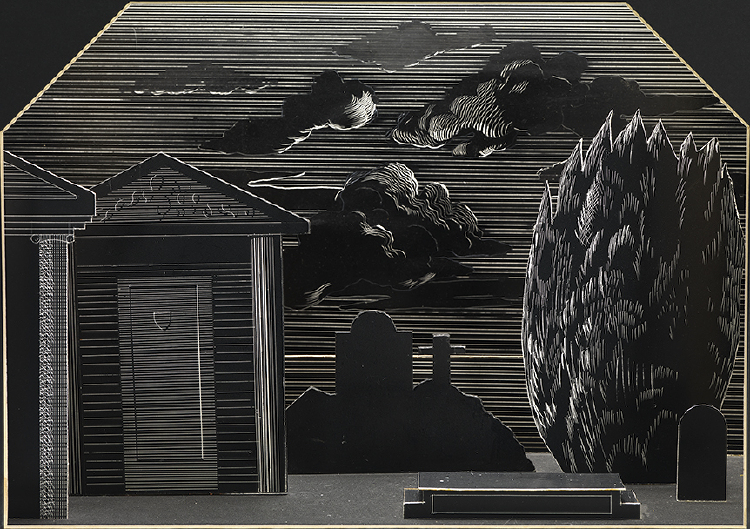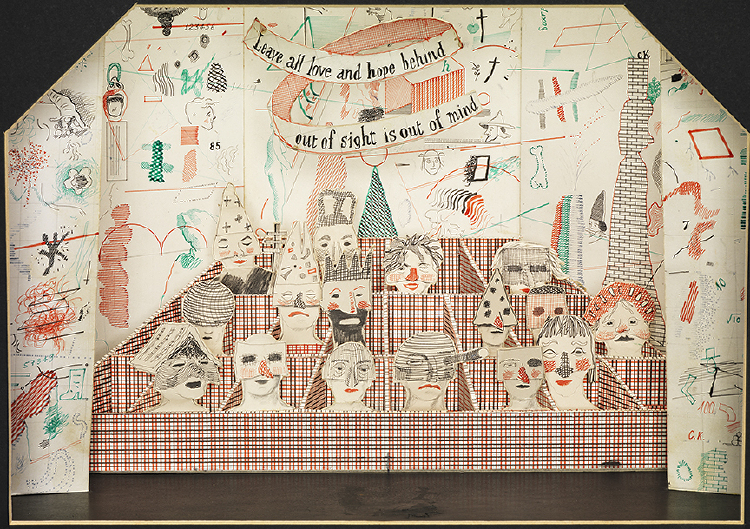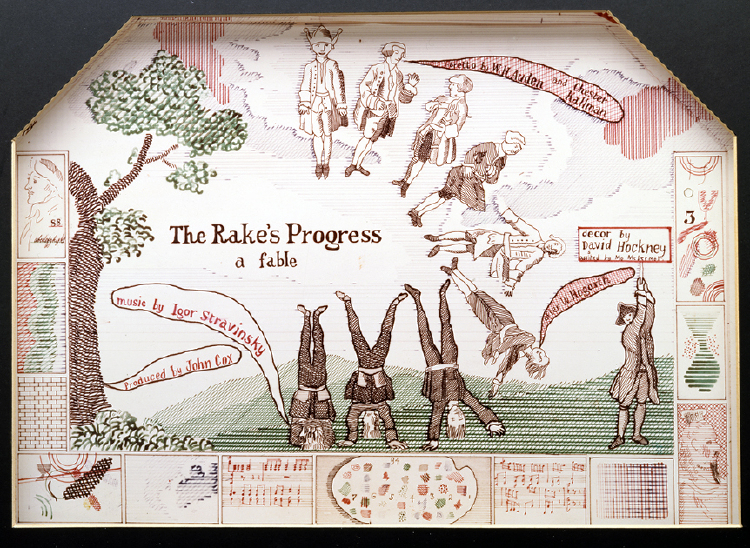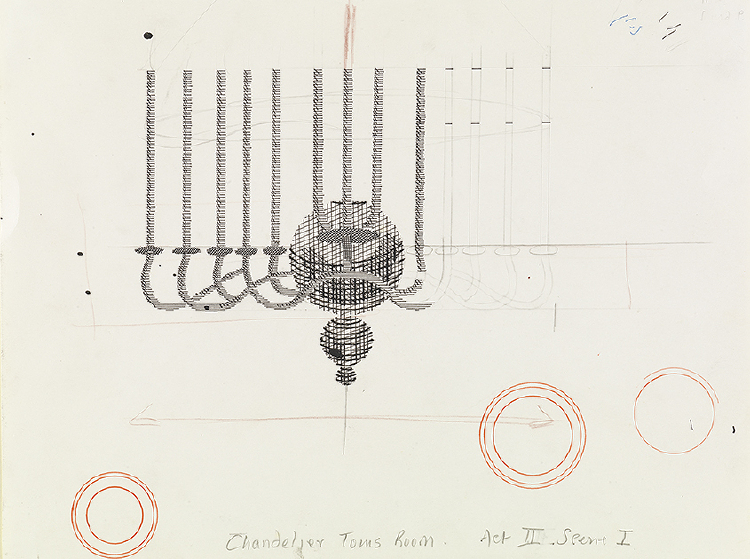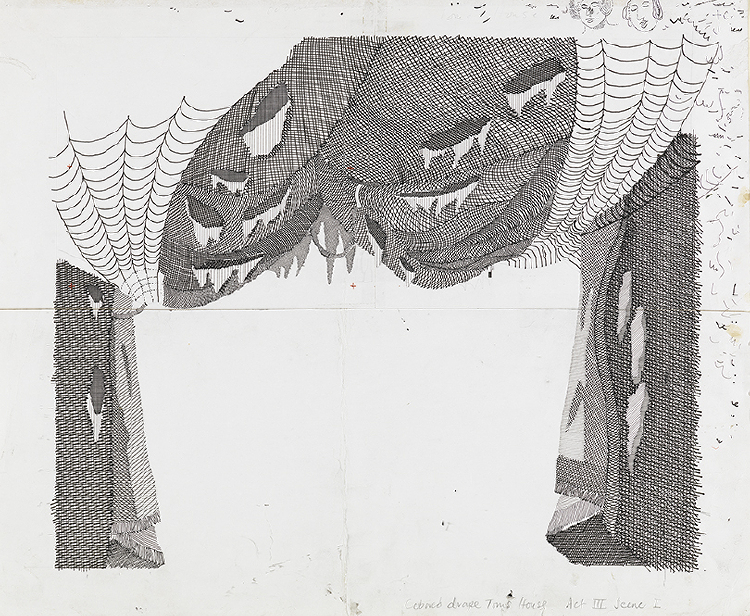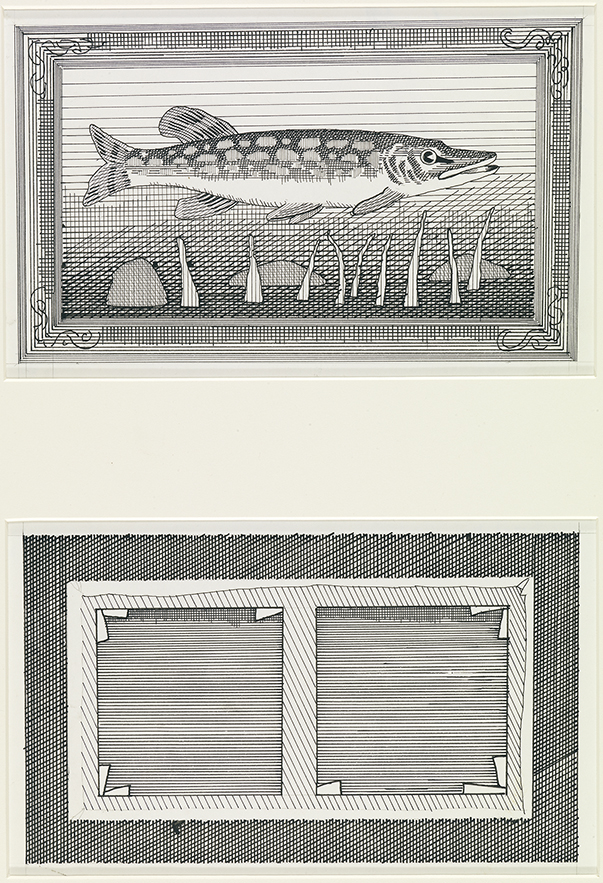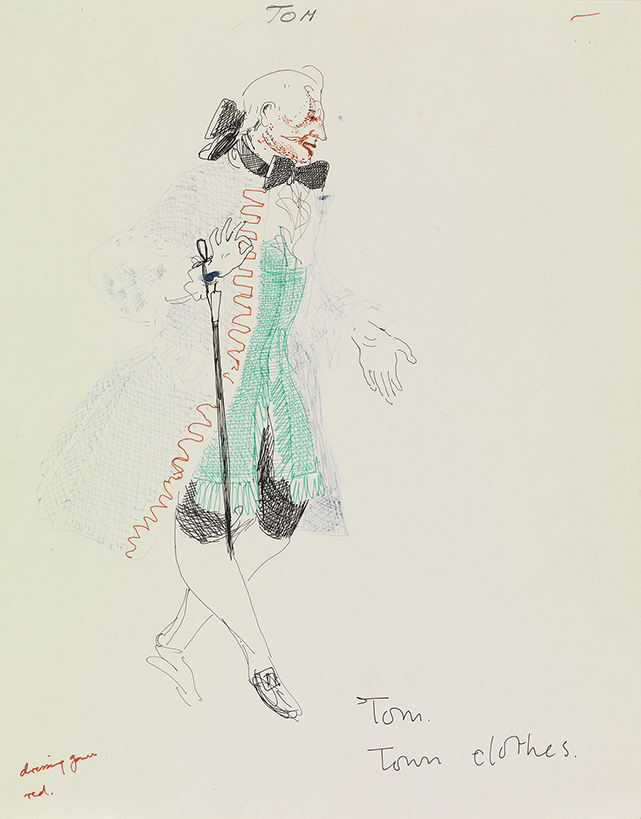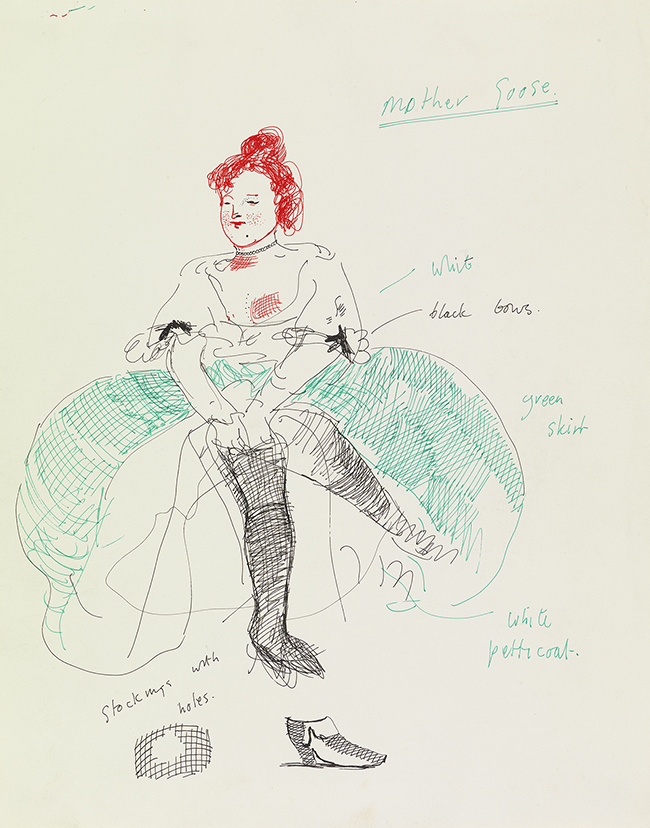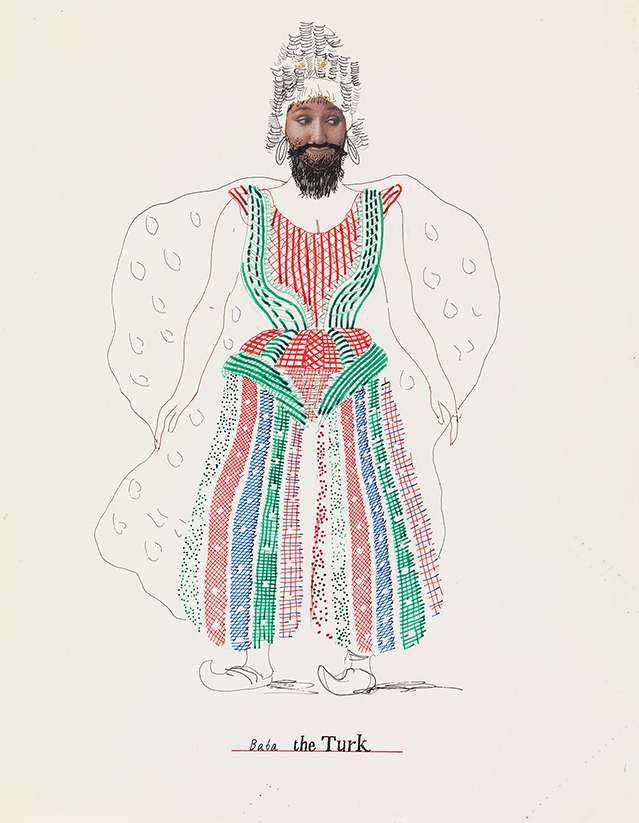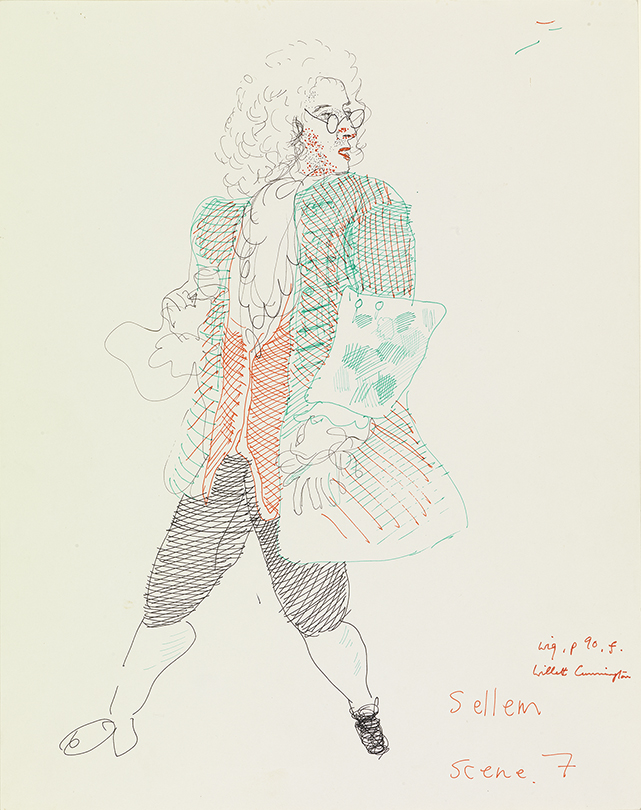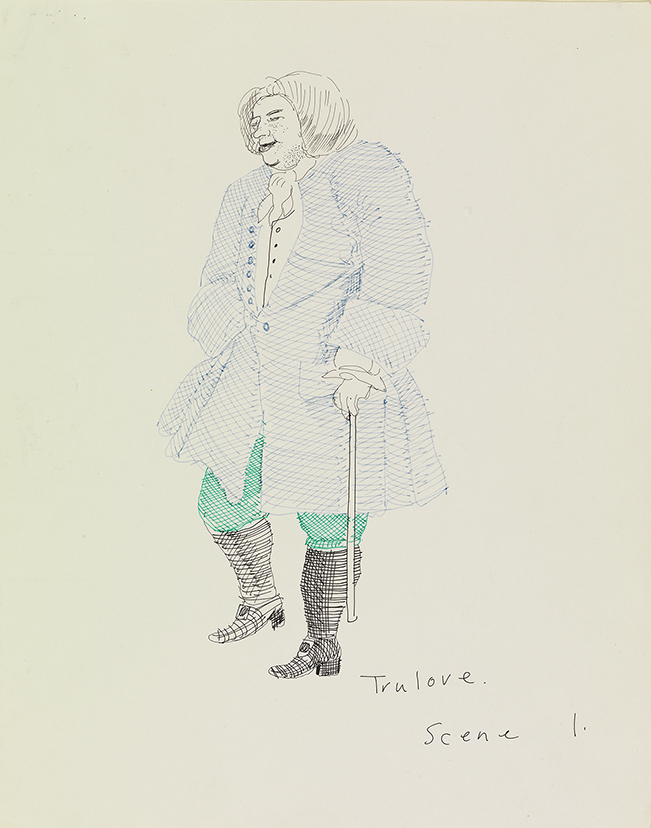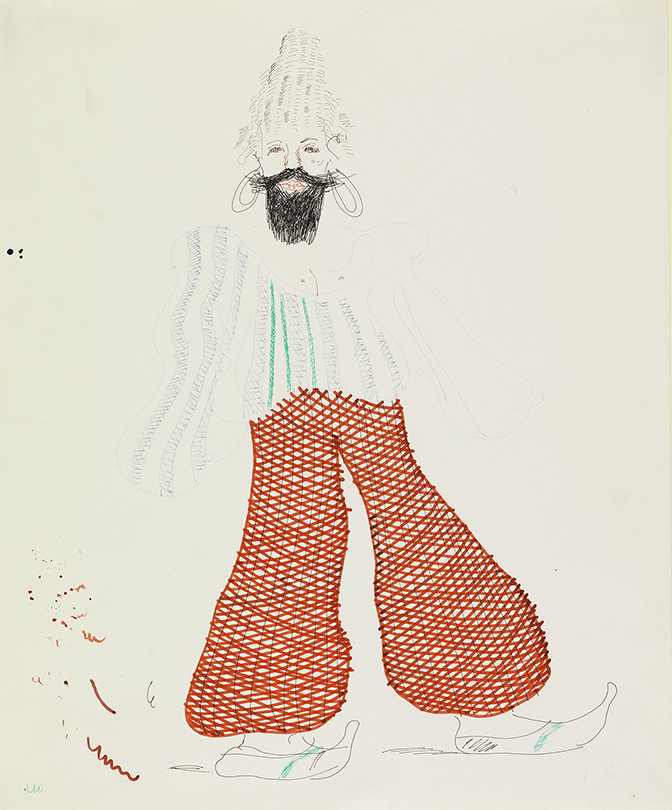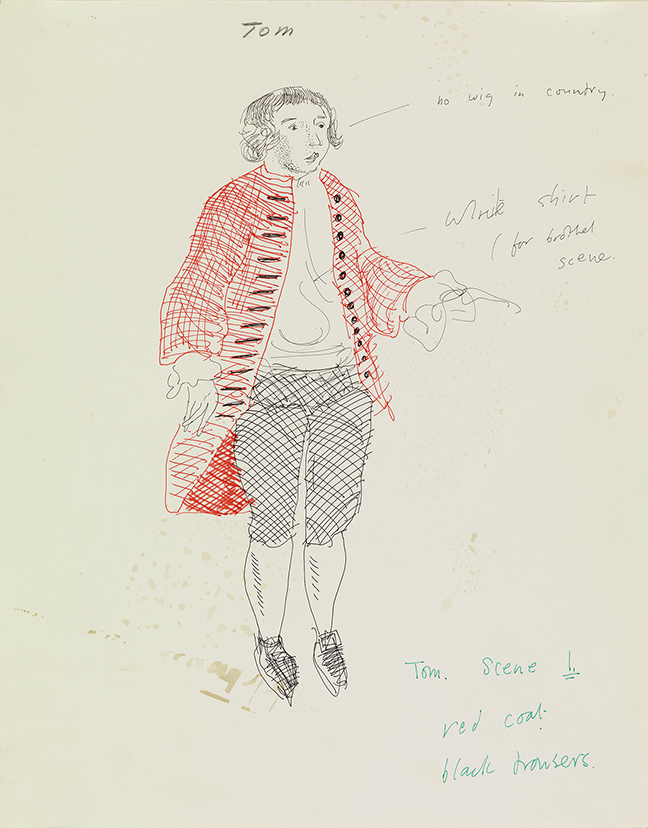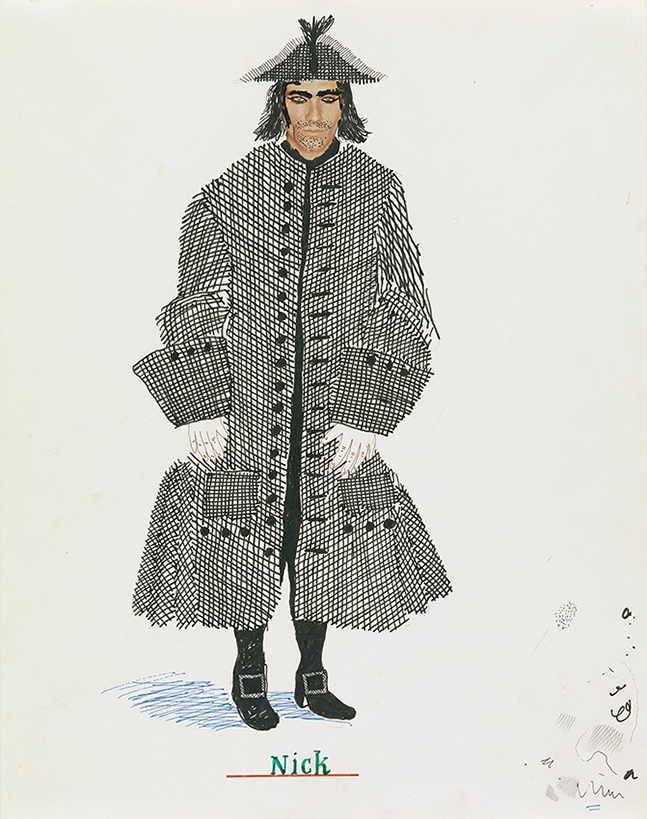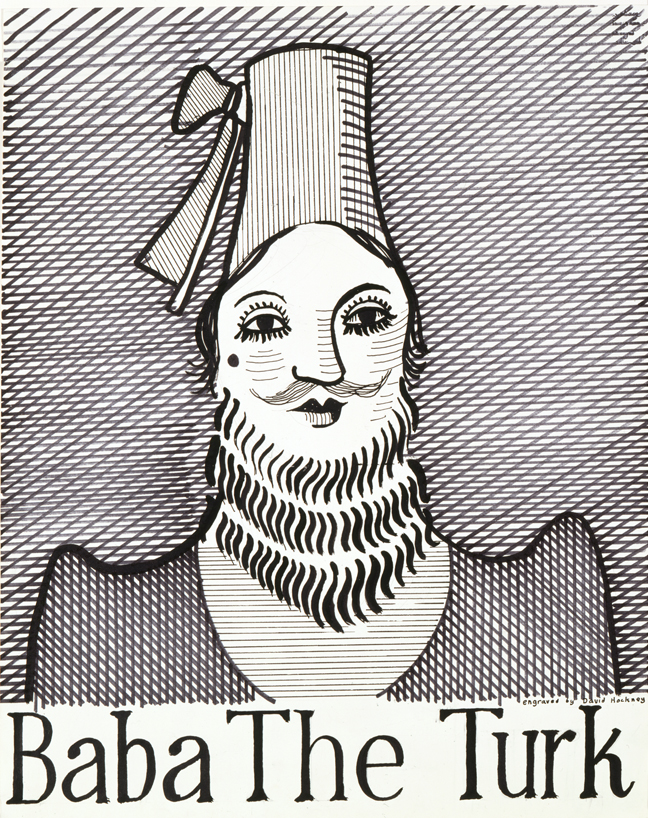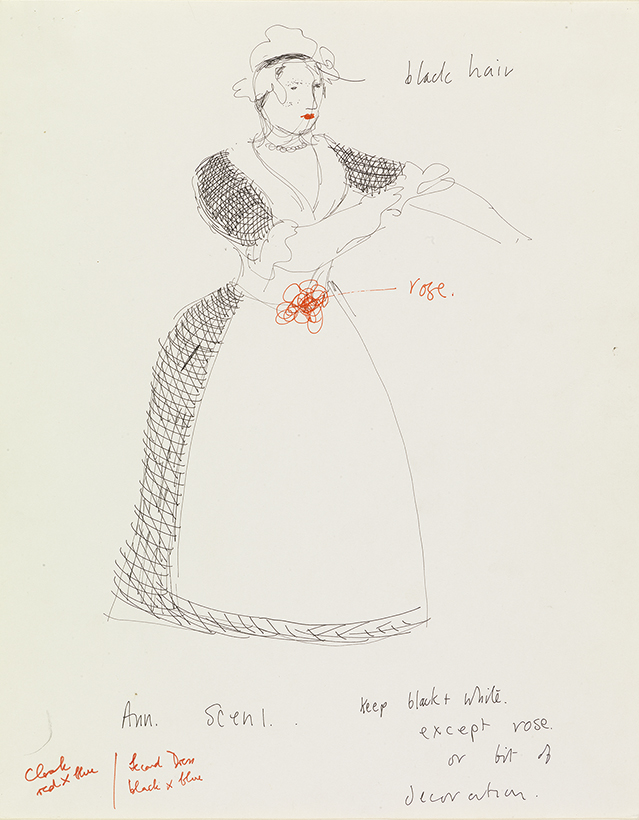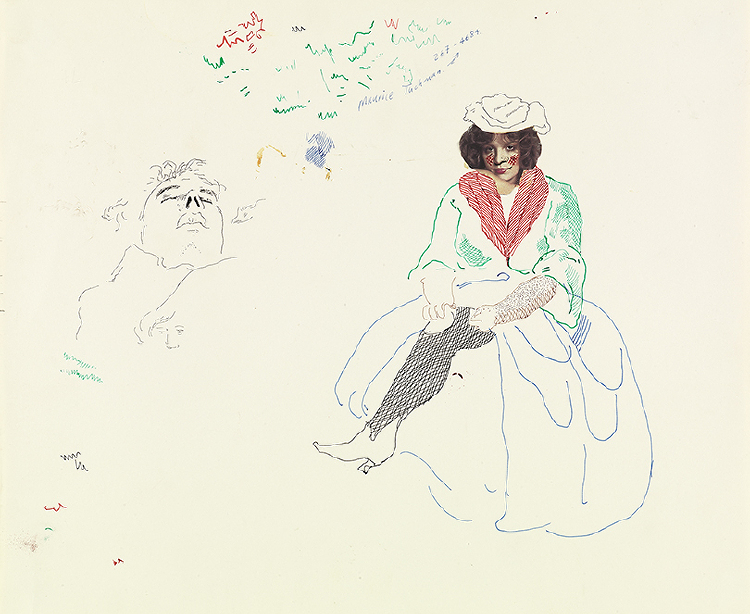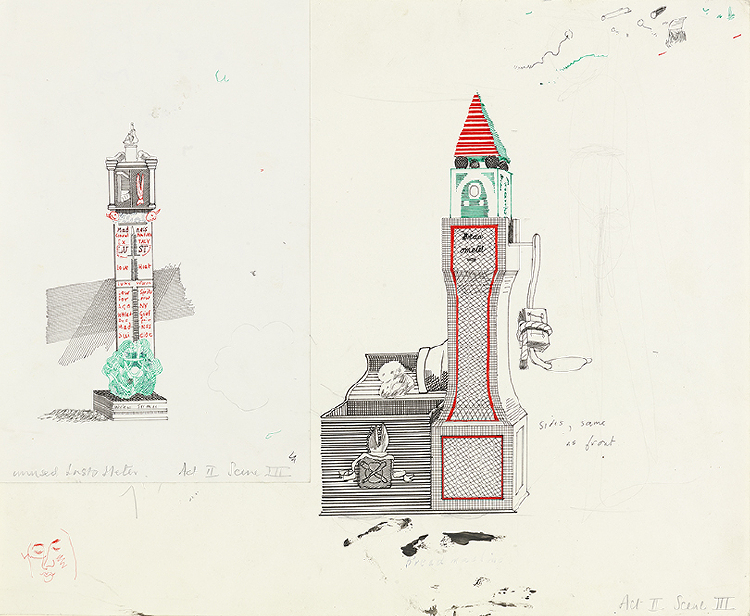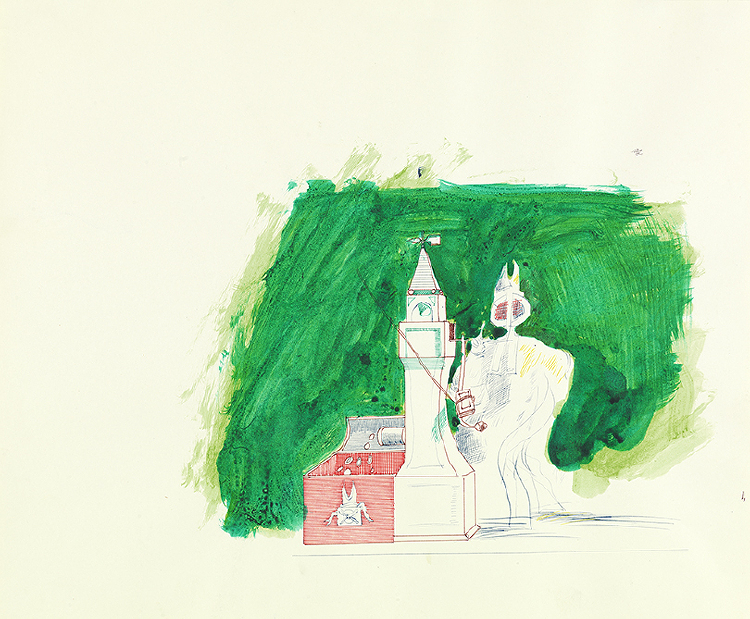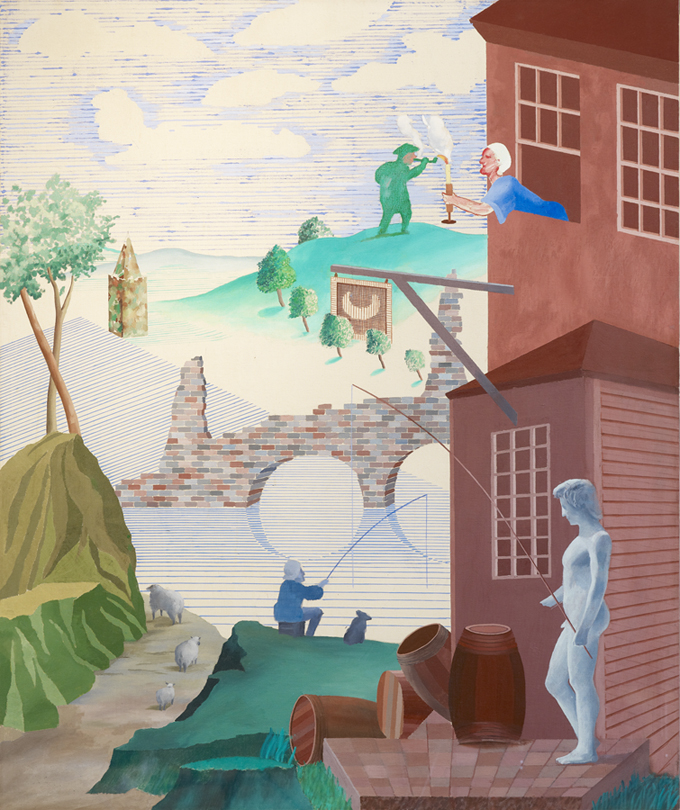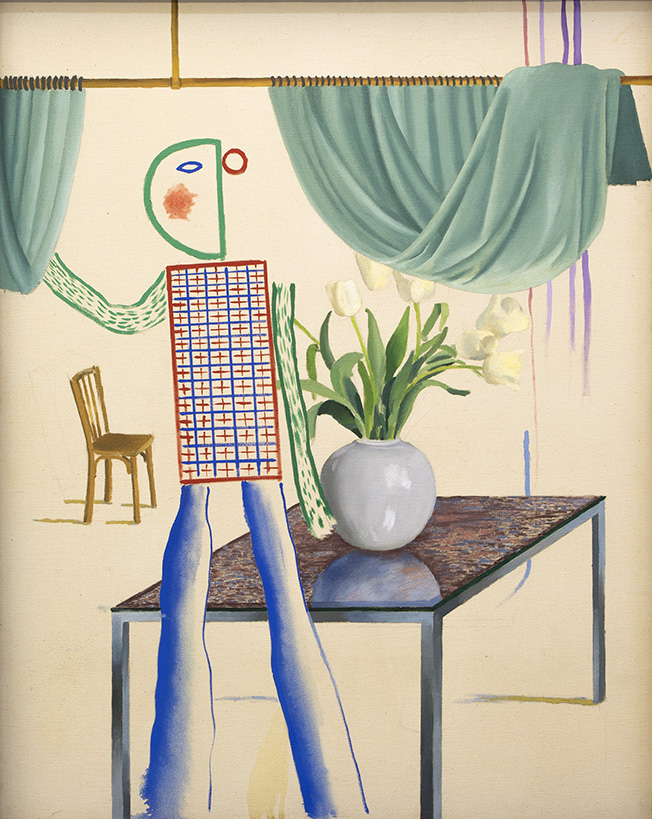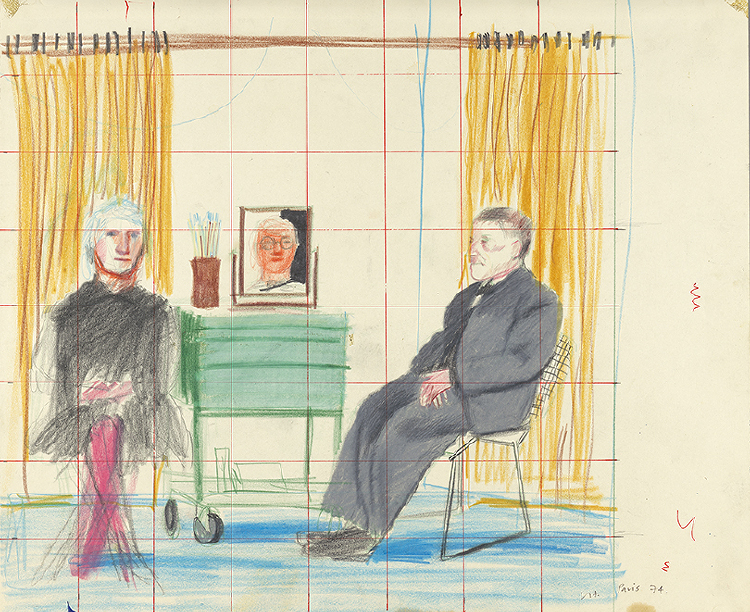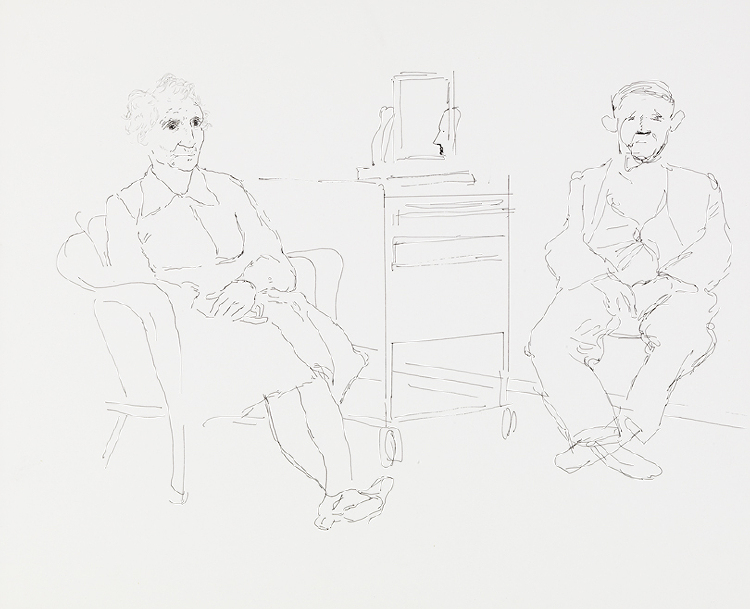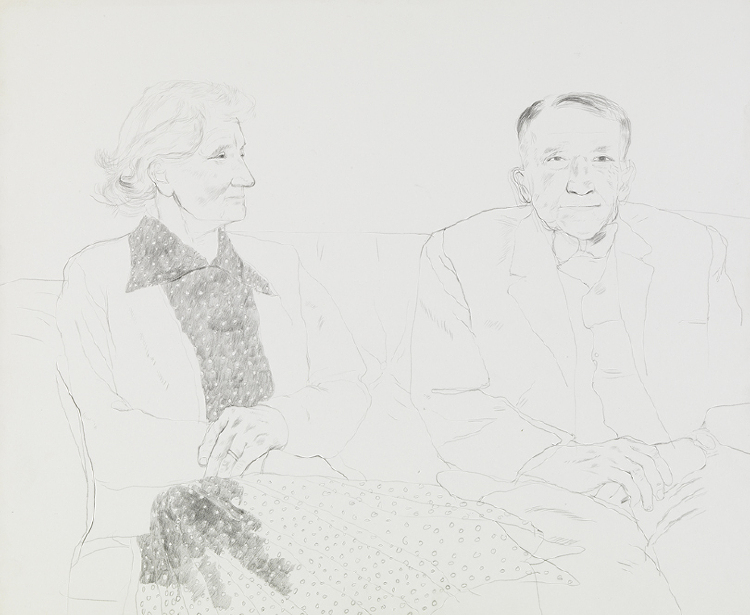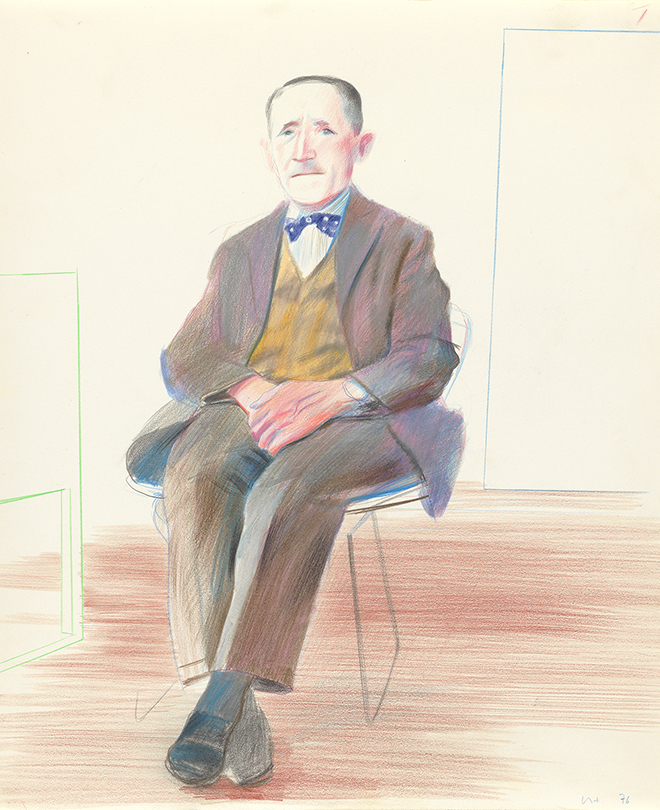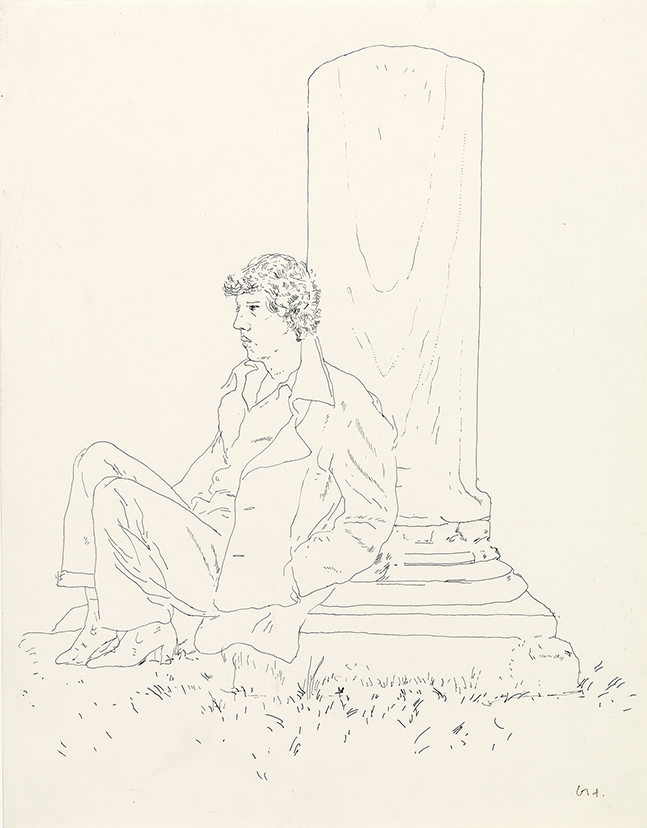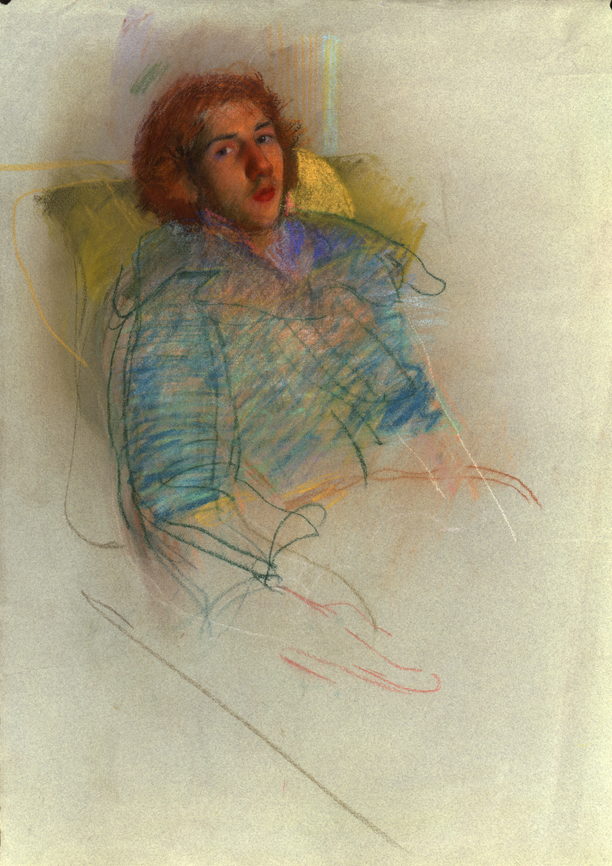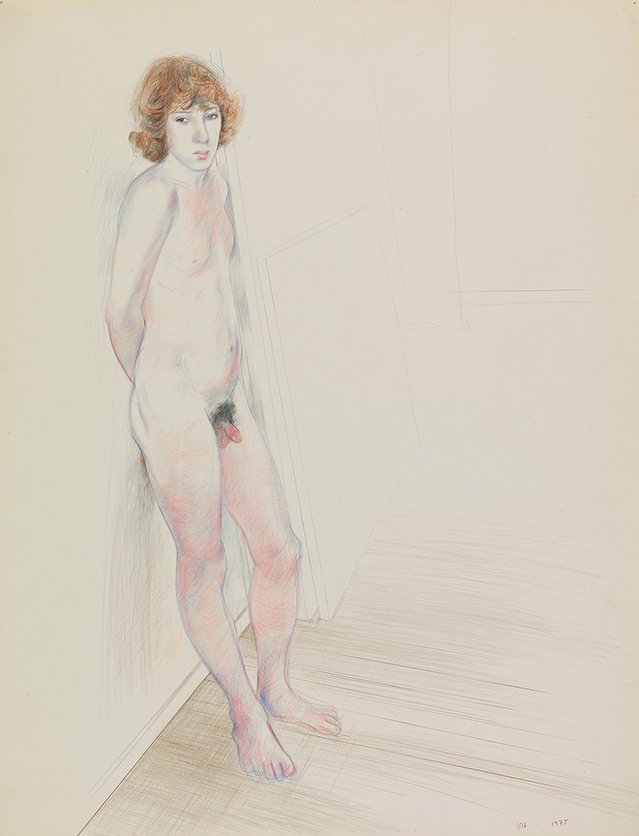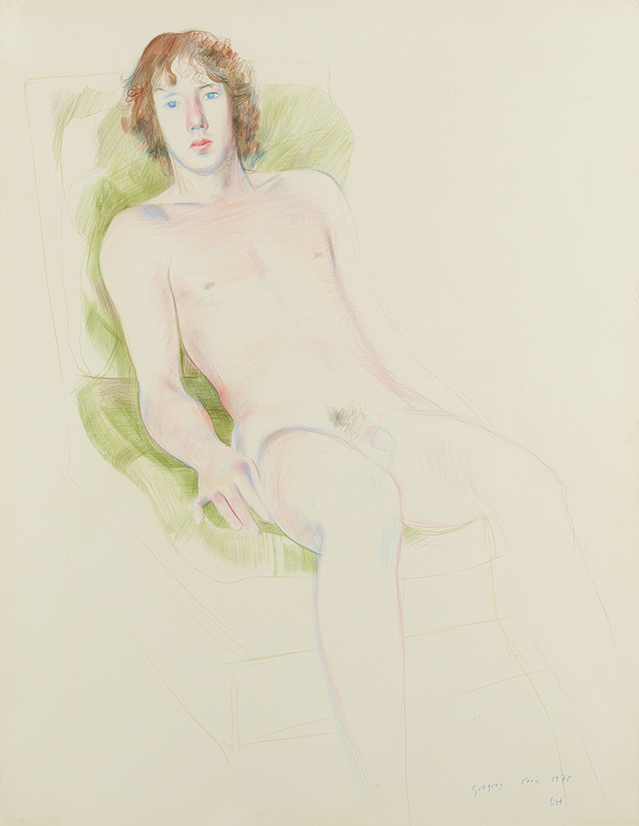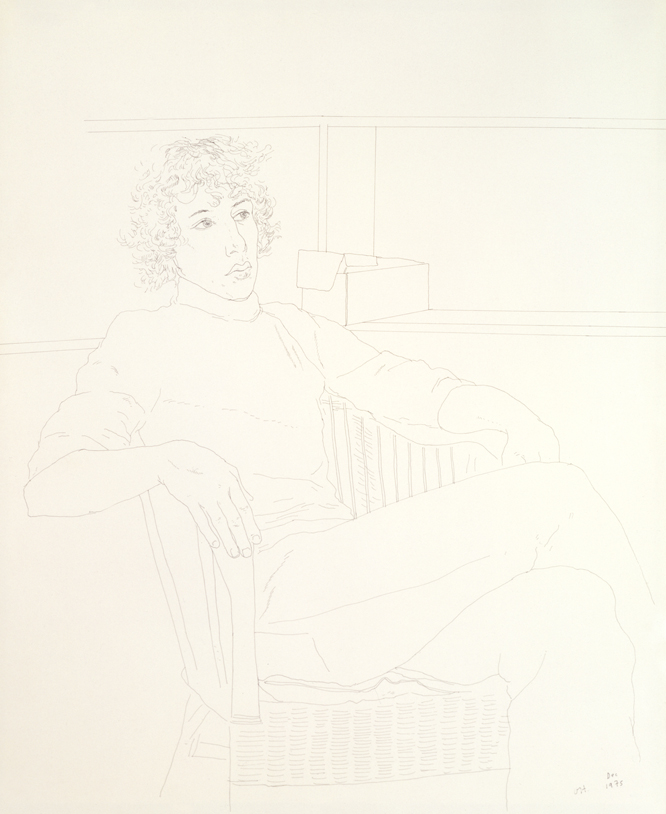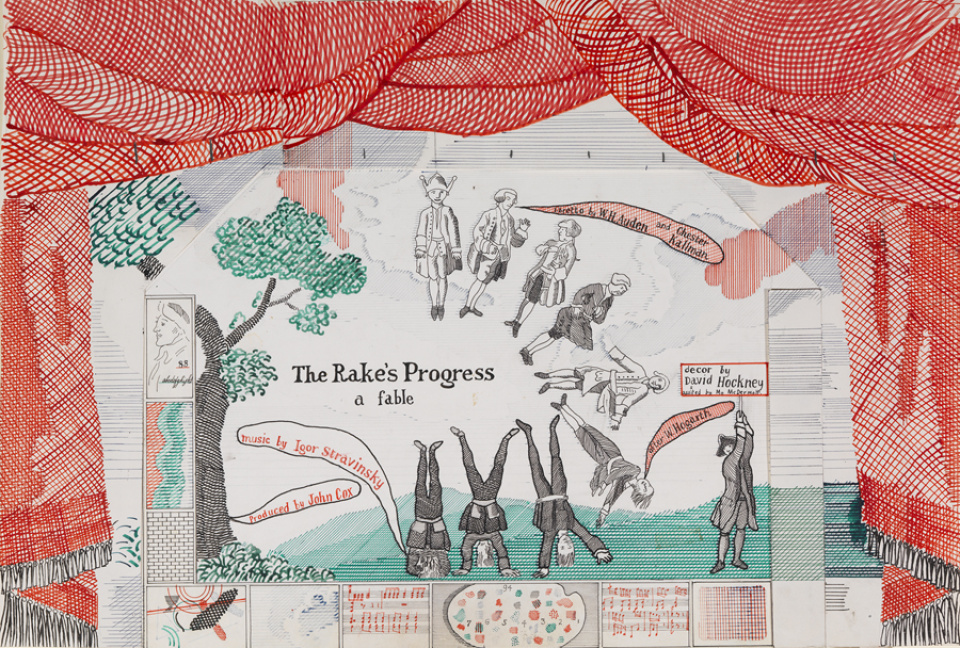
The Rake's Progress
Hockney is hard at work on a commission for the Glyndebourne Festival Opera: sets and costumes for a production of The Rake’s Progress directed by Glyndebourne’s first director of production, John Cox. As with Hockney’s 1961-63 etchings, A Rake’s Progress, William Hogarth’s series of [NESTED]prints, A Rake’s Progress, is the inspiration for the three-act avant-garde opera by Igor Stravinsky with absurdist libretto by W. H. Auden and Chester Kallman, into which Hockney injects an apt spirit of playfulness. He uses cross-hatching and parallel lines, typical of engraving technique, to mimic Hogarth’s prints in his set designs. The production premieres in June, and a celebratory picnic is held on the lawn.
The Rake’s Progress came at a good time for me because it was a period when I was trying to figure out what to do in painting. So when this came along in 1974 it ended something for me and took me into something else …. I’d always loved the theater. In fact, I was interested in it before I was first asked to design productions, because I’d used theatrical ideas in painting. And I’d talked about it; I said long ago that I thought of all my painting as drama. Some of my early pictures have titles such as Theatrical Landscape. I was always interested in the theater because it is about creating illusion in space.
We made a lot of samples of the cross-hatching in different sizes, and hung them up on the stage. I sat at the back of the theater with binoculars, deciding what the scale should be. If it was done too small, it would look like a checkerboard—and that would be ridiculous. So I made some calculations and came up with the exact size.
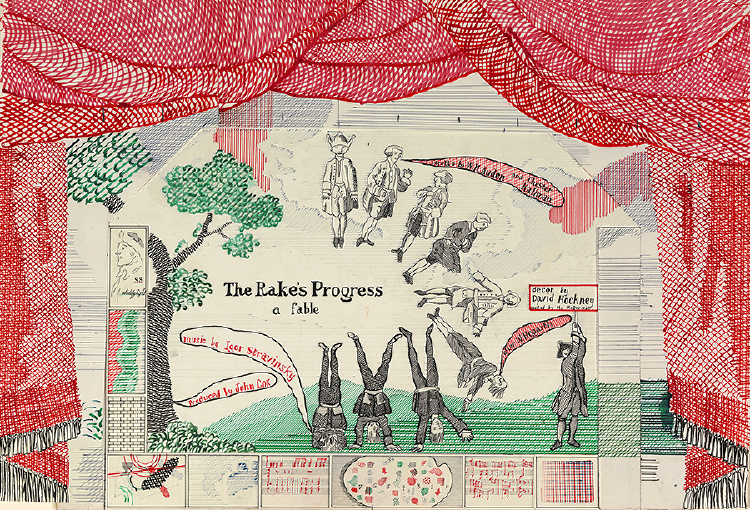
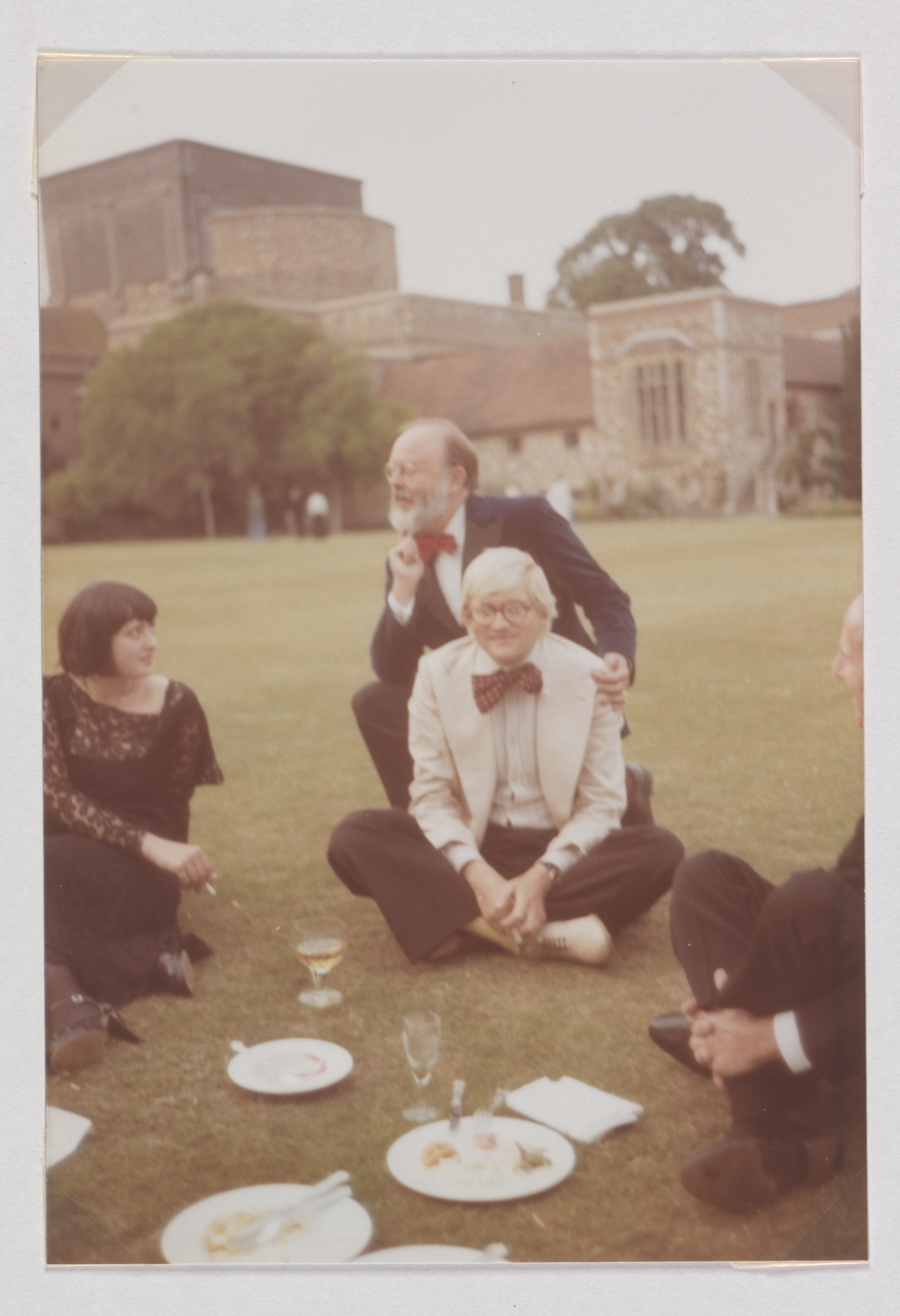
At work in the Paris studio
Hogarth’s etchings are elsewhere echoed in Hockney’s output, including the painting Kerby (After Hogarth) Useful Knowledge, which takes up the master satirist’s frontispiece for a treatise on perspective written in 1754 by John Joshua Kirby, titled Dr. Brook Taylor’s Method of Perspective Made Easy. Hockney spells Kirby’s name incorrectly in the title, and he never bothers to change it, adding to the whimsy of the work.
I went into the theater to liven myself up—and then in 1975 I did a painting called Kerby (After Hogarth) Useful Knowledge. That was the first picture I did using reverse perspective. The point about reverse perspective is that it’s more about you. It means that you move, because you can see both sides of the object. The Hogarth print—which I discovered when I was researching before doing the design of The Rake’s Progress at Glyndebourne—was a sort of satire on what could go wrong if you didn’t know the rules of perspective. But for me it was a way of breaking through my old attitudes about naturalism. After doing that I worked in the theater solidly for three years—which was another liberation, a new kind of space for me.
The short depth of field in Invented Man Revealing Still Life is indicative of the theatrical space recently preoccupying Hockney, while its mixture of abstract figuration [NESTED]and art historical references signals a return to the themes of his paintings prior to the photorealistic works of the early 1970s.
The figure was invented, but not the still life …. The curtain was taken from Fra Angelico’s The Dream of Deacon Justinian.
My Parents and Myself
He focuses doggedly on painting My Parents and Myself from sketches and photographs taken of Mr. and Mrs. Hockney on their recent visit to Paris, but the multigenerational self portrait in his naturalistic style goes unfinished until 1976 when he paints over it.
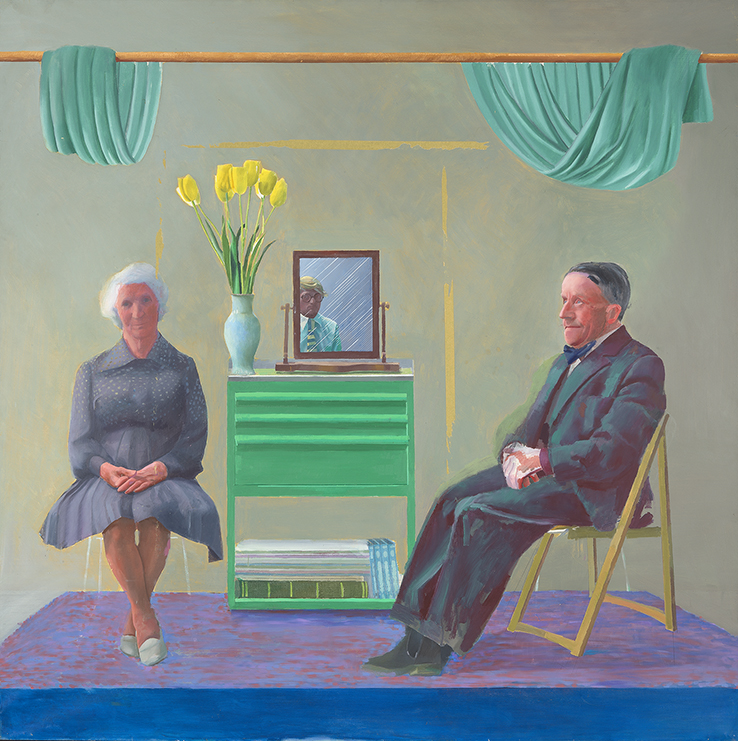
It’s a very traditional thing to do, I know, painting one’s parents, but I think it could be a lot more than just that—their predicament, their lack of fulfillment, the desperate-not-knowing what they could have had out of life. And their relationship with me.


Gregory Evans
Gregory Evans, a student of fashion and textiles, is living in Paris too. He and Hockney had met in 1971, but now they become close companions, taking trips to Glyndebourne and Italy together as their romance blossoms.
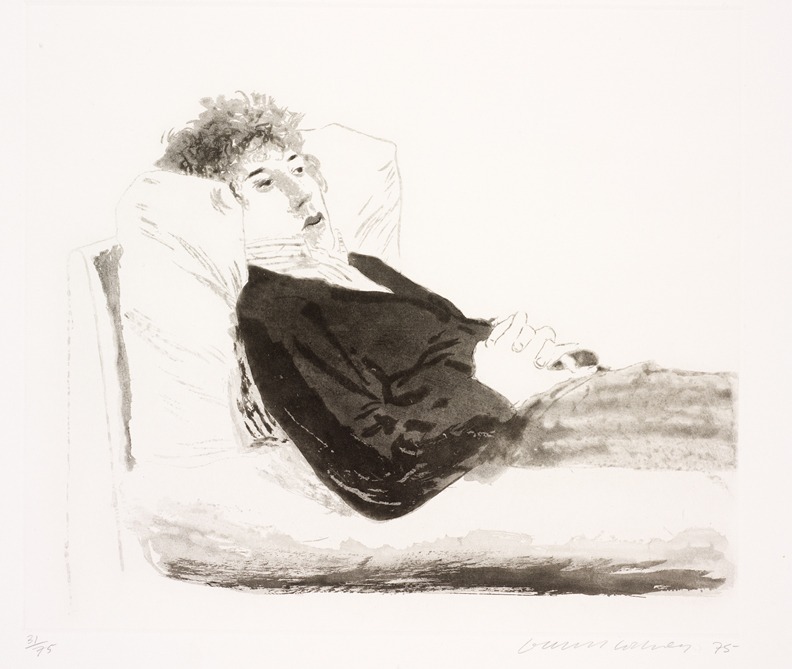
Return to London
After spending part of the summer on Fire Island in New York with Henry Geldzahler, Hockney returns to Paris for a short stint. By November he has [NESTED]returned to London to live and work in Pembroke Gardens: "Not too many people knew I was there. Each time you move back you have a nice period when it’s quiet, the phone doesn’t ring much, you can get on with work and see only a few friends …. I started feeling much better."
I lived in Paris for two years from 1973 to 1975. The Left Bank was still cheap. I worked in one big room, with two little bedrooms off it. I liked it because I could walk into a café and there were always people you knew, and the great thing was that if you got fed up with it you could just get up and go. I like people, but because I lived in the center, people started coming round to see me; and when they arrived at 3:30 in the afternoon and were still there at midnight, I realized that I couldn’t work there. I decided to leave one day, packed up the next.
Exhibitions
Solo
- Dessins et gravures, Galerie Claude Bernard, Paris, France (Apr 15–May 24); catalogue.
- Drawings and Selected Prints, Margo Leavin Gallery, Los Angeles, CA, USA (Sep 9–Oct 4).
- Designs for The Rake's Progress, Bristol City Art Gallery, Bristol, UK (Sep 15–Oct 4), travels to Manchester City Art Gallery, Manchester, U.K. (Oct 8–24).
Group
- European Paintings in the Seventies: New Work by Sixteen Artists, Los Angeles County Museum of Art, Los Angeles, CA, USA (Sep 30–Nov 23), travels to Saint Louis Art Museum (Mar 16–May 9, 1976) and Elvehjem Art Center, Madison, WI (Jun 8–Aug 1, 1976); catalogue.
Publications
Publications
- David Hockney dessins et gravures, Galerie Claude Bernard, Paris.
- David Hockney: schilderijen, tekeningen en prenten, Nijmeegs Museum, Nijmegen, The Netherlands.
